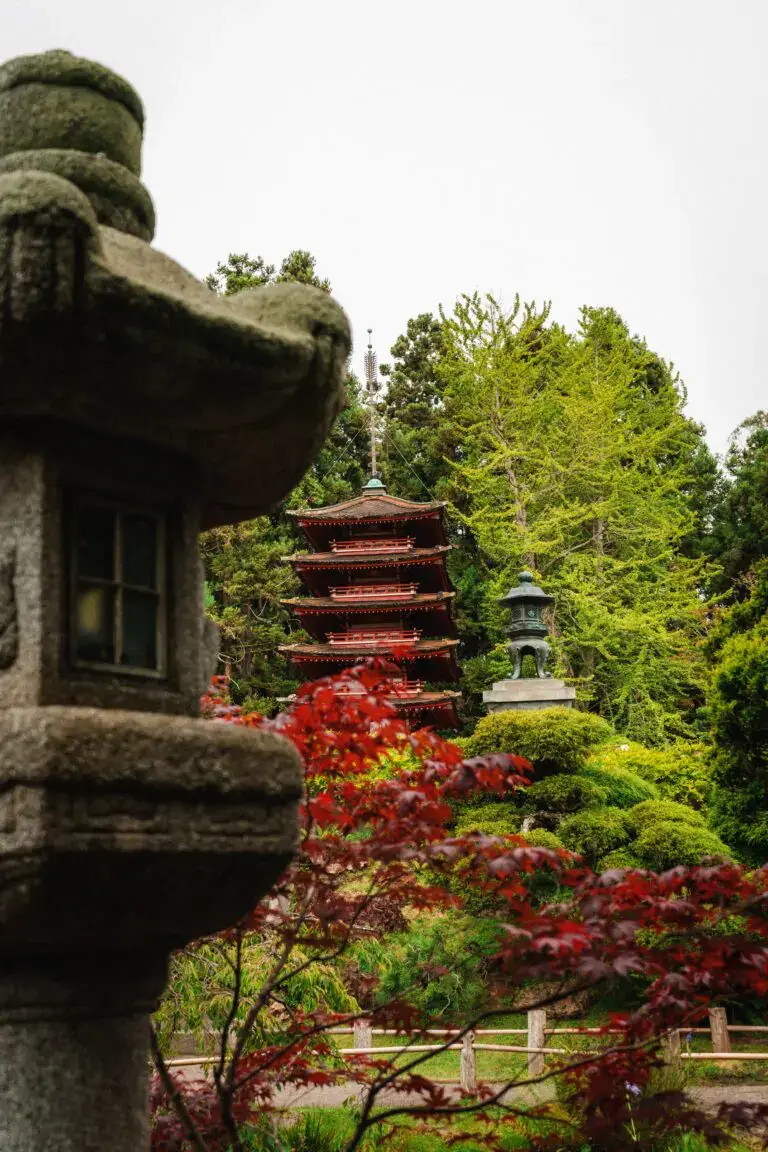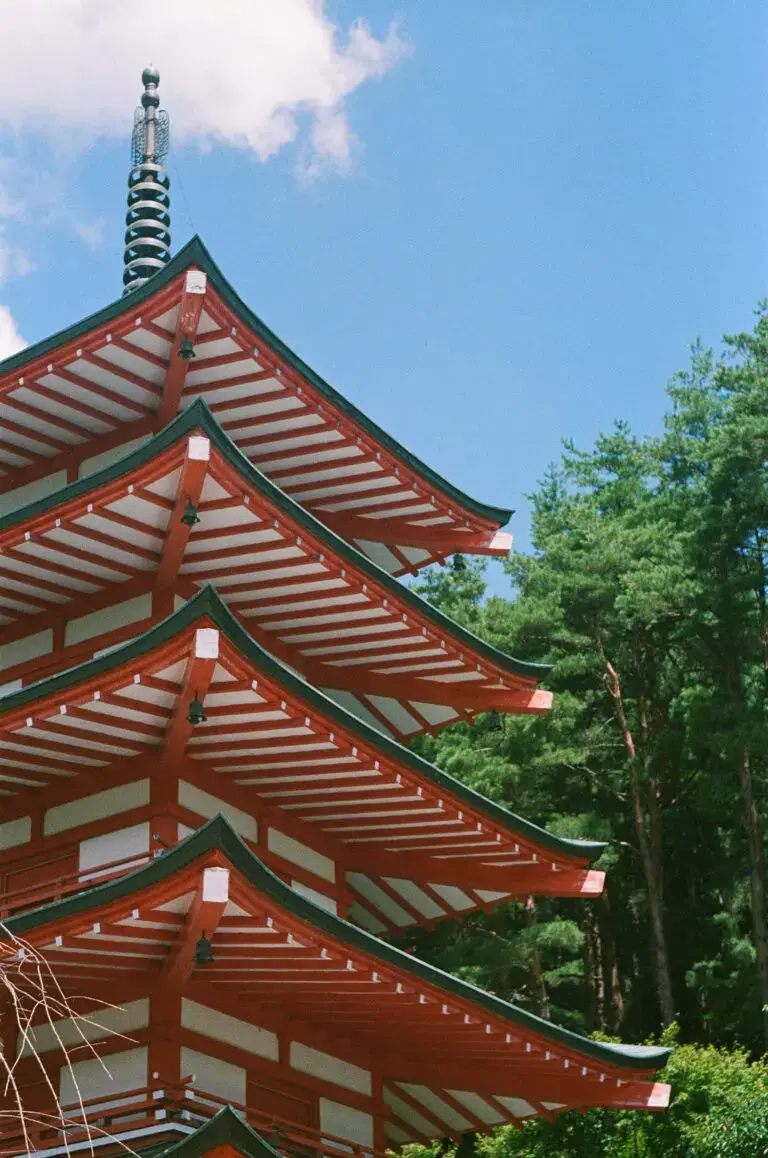Introduction to the Pagoda Crassula
Whisking you away to the arid regions of South Africa, the Pagoda Crassula stands as a sentinel of the succulent realm. This quirky plant, with its striking geometry and cascading layers, evokes the mystique of ancient temples, instantly transporting the beholder to a miniature wonderland. It’s not merely a plant; it’s a living sculpture that commands attention and ignites curiosity in the heart of every plant lover.
Distinguished by its tightly stacked, triangle-shaped leaves that spiral upward, the Pagoda Crassula creates a visual tapestry reminiscent of the tiered towers it’s named after. Its leaves are a tapestry of greens, often blushed with hues of crimson especially when kissed by the sun. This spectacle of color variation is a testament to its adaptability and the spirited dance it performs with the changing seasons.
In the hands of a creative gardener, the Pagoda Crassula transcends its role as a mere plant, becoming a centerpiece in miniature gardens and terrariums. It embodies the essence of the exotic and the ability of nature to architect shapes that rival the finest creations of man. Imagine a small cluster of these succulents perched atop a rocky terrain within a glass container—each plant a pagoda in a serene landscape of your own design. Isn’t that a marvel to behold?
From the cracks of a rockery to the heart of an urban apartment, the Pagoda Crassula thrives, proving its worth as a truly resilient species. It asks for so little—just a sip of water, a breath of fresh air, and a sliver of sunshine. In exchange, it offers back beauty that is both timeless and ever-evolving. No wonder it’s become an emblematic specimen for enthusiasts seeking a touch of architectural flair in their horticultural repertoire.

There is an undeniable charm in the silhouette of the Pagoda Crassula against the backdrop of a setting sun or as part of an eclectic collection of nature’s rarest forms on a bright windowsill. It’s not just about owning a plant; it’s about harboring a slice of the globe’s natural history, a living relic that thrives under our care and continues to enchant with its understated yet compelling presence.
The Essentials of Pagoda Crassula Care
Picturing the Pagoda Crassula in its natural glory is like capturing a snapshot of tranquility itself—each leaf stacking neatly atop the other, reminiscent of the meticulous architecture of ancient temples. But to transform your home into a serene oasis with this succulent marvel, you’ve got to grasp the essentials of its care routine.
First things first, let’s talk about basking in the sun. Like a novice sunbather tiptoeing into the light, the Pagoda Crassula adores a good sun bath but without the risk of a scorch. Place your green buddy where it will receive a generous helping of indirect sunlight—a bright room, perhaps, but shielded from the harsh midday beams. It’s the kind of sun-kissed glow it craves, ensuring those characteristic vibrant hues.

Now, let’s dive into the watering waltz. If there’s one thing the Pagoda Crassula detests, it’s soggy feet. Imagine wearing wet socks all day—unpleasant, right? Your succulent feels the same about overwatering. So, how often should you reach for the watering can? It’s simple: check the topsoil—a dry top inch signals a thirsty plant. This ‘touch-test’ ensures you’re not drowning it in love. In the colder months, reduce the frequency, for even succulents prefer a little hibernation.
Finally, the pièce de résistance: soil composition. This is not just dirt; it’s the foundation of your Pagoda Crassula’s well-being. What you’re aiming for is the soil version of a well-draining yet comfy bean bag chair. A mix that’s one-part standard potting soil with one-part gritty sand or perlite creates that ‘just right’ bed for your plant to thrive. It allows the roots to breathe and the water to flow through effortlessly, just like a mountain stream in a tranquil forest.
In conclusion, caring for your Pagoda Crassula doesn’t require a green thumb so much as a thoughtful touch and an understanding of its likeness to both a zen master and a practical architect. Embrace these care essentials, and you’re well on your way to bringing a sense of calm architectural beauty into your living space.
Propagating Your Pagoda Crassula
Looking to expand your succulent collection or share the beauty of the Pagoda Crassula with friends? You’ve landed on the perfect page for learning the fine art of propagation! Propagation may sound like a term straight out of a biology textbook, but it’s simply the process of creating new plants from your existing one. Let’s dig into the nitty-gritty of making more of these geometric wonders.
Why Propagate from Leaf Cuttings?
The Pagoda Crassula, with its stacked leaves and eye-catching form, is a prime candidate for propagation through leaf cuttings. This technique is a slice of genius—it’s cost-effective, efficient, and, let’s face it, pretty cool to watch those tiny plants emerge. Using leaf cuttings helps preserve the original plant’s genetic blueprint, ensuring your baby crassulas will mirror the parent plant’s charms. And, it’s a quicker path to plant multiplication compared to the more capricious process of growing from seeds.
Step 1: Start with a healthy Pagoda Crassula and choose a full-grown leaf. A gentle twist is all it takes to remove the leaf from the stem. Make sure you get a clean pull, as a torn leaf won’t propagate successfully.
Step 2: Allow the leaf to callous. Lay it out on a dry surface for a few days until the wound heals over. This crucial step prevents rot and gives your new plant the best chance at life.
Step 3: Prep your pots with a well-draining succulent mix. Moisten the soil slightly—you want to create a humid environment for the leaf, not a swamp.
Step 4: Place the calloused end into the soil. Don’t bury it; just a light contact with the soil is enough. At this point, patience is your ally. In a few weeks, you’ll observe tiny roots peeking out, seeking the soil.
Step 5: Once those roots establish themselves, the piece de resistance appears—a mini Pagoda Crassula begins to emerge at the base of the leaf. Maintain lightly moist soil and provide plenty of indirect sunlight during this stage.
The Slow Charm of Seed Propagation
Although leaf-cuttings are the star of the show, there’s a nostalgic charm to growing Pagoda Crassula from seeds. It’s a slower process, filled with anticipation and rewarding patience. Seed propagation can be a hit or miss, but when it hits, it’s a home run of satisfaction. For those gardeners with a penchant for the long game, growing Pagoda Crassula from seeds can be an exercise in horticultural Zen.
Remember, whether you choose leaf cuttings or seeds, the magic of propagation is not just in the end result. It’s in the journey, the little victories, and the lessons learned with each tiny green shoot. Now, go forth and propagate!
Designing with Pagoda Crassula
Embrace the geometric beauty of Pagoda Crassula, a succulent gem that infuses effortless charm into living spaces. As a celebration of form and versatility, this succulent marvel crafts a visual dialogue between nature and design. Envision a rustic corner shelf where Pagoda Crassula reigns, its jade green rosettes juxtaposed against a warm terracotta backdrop, an embodiment of tranquility in your urban sanctuary.
Outdoor escapades beckon the Pagoda Crassula as well. Picture a rock garden dotted with these geometric wonders, adding structural depth that captures the eye and sparks conversation. Each leaf, a symmetrical marvel, interacts with the elements, casting playful shadows that dance with the day’s light.

Indoors, think of a minimalist office desk where a potted Pagoda Crassula becomes the focal point, its precise layers echoing the clarity of thought one seeks in a workspace. Or perhaps introduce a touch of living art by framing a vertical garden panel that features a kaleidoscope of these succulents, creating a vivid tapestry of greens and reds.
And let’s not forget about the practical side of decor. Pagoda Crassula’s ease of care makes it an ideal candidate for busy lifestyles. If you’re seeking tips on keeping your Pagoda Crassula in tip-top shape, there’s a trove of resources, such as this comprehensive care guide that ensures your green companion will thrive with minimal fuss.
With every placement of a Pagoda Crassula, you’re not just adding a plant; you’re sculpting the air around you, enhancing the aesthetic appeal in a profound yet understated manner. It’s a testament to design meeting nature in the most seamless and captivating of ways.
Troubleshooting Common Issues
As enchanting as the Pagoda Crassula may be, it’s not immune to the occasional hiccup. Whether you’re dealing with uninvited pests, mysterious diseases, or environmental stress factors, it’s crucial to stay vigilant and responsive. These common issues, if unchecked, can turn your succulent wonder into a troubled plant. But fear not, my green-thumbed friends, because every problem has a solution!
Let’s start with pests – the bane of plant caretakers everywhere. Imagine you find your Pagoda Crassula looking a little lackluster, its once vibrant leaves now spotted with tiny nuisances. Aphids and mealybugs tend to treat these succulents like a buffet, sucking the life out of them quite literally. Combat these critters by introducing natural predators, like ladybugs, or spray a gentle insecticidal soap solution to send the pests packing.
Now, onto diseases. Root rot often rears its ugly head when we shower our plants with a little too much love – and water. When your Pagoda Crassula’s roots sit in soggy soil, they become a breeding ground for fungal nightmares. To prevent this, ensure you’re using a well-draining soil mix and a pot with proper drainage holes. Caught the rot too late? It might be time to propagate healthy cuttings to give your plant a fresh start.
Environmental stress is another factor that can throw your Pagoda Crassula off balance. Too much direct sunlight might sound like a tropical vacation, but it can leave your plant with sunburns. And while Crassula plants enjoy basking in the light, they prefer not to do so at the expense of their health. Strike a balance with filtered sunlight or a location that provides shade during the harshest rays. Similarly, too little light can lead to etiolation – when your plant starts to stretch out spindly and desperate for sunbeams. Strike that Goldilocks zone of just-right lighting, and watch your Pagoda flourish.
Temperature and humidity can also play tricks on your plant. These succulents are quite the troopers, but they don’t fare well in freezing temperatures. Keep them cozy during cold months, and ensure they’re not sitting in a drafty spot. On the flip side, too much humidity can lead to fungal issues, so maintain good air circulation around your plant.
Handling these challenges may seem daunting, but the rewards of a thriving Pagoda Crassula are worth every bit of effort. And there’s no need to go at it alone! Check out this helpful video, chock-full of care tips for healthy succulents:
Remember, every plant whispers its needs in subtle ways. Keep a watchful eye, and your Pagoda Crassula will not only survive but thrive under your guardianship. Now that’s what we call plant parenthood done right!
The Enduring Popularity of Succulents

Succulents like the Pagoda Crassula have entrenched themselves in the hearts of gardeners and home decorators alike, owed in large part to their resilience and the minimal care they demand. What marks these drought-resistant darlings as perennial favorites, you ask? It’s their remarkable ability to fit into nooks of everyday life that might otherwise seem mundane.
Consider the modern trend of living walls: vertical gardens that bring life to urban spaces. Here, crassulas often star, their geometric beauty adding dimension and texture. In city apartments with limited square footage, these succulents transform balconies into green sanctuaries. With a forgiving nature, the Pagoda Crassula kindles in first-time plant owners the joy of nurturing life. Its sturdy disposition ensures that even the most forgetful caretakers can relish the gratification of a thriving plant.
It’s not just their hardiness that endears succulents to the masses, but the ecological statement they make. In a world increasingly conscious of water usage, succulents lead the garden evolution with their low-water ethos. They’re symbols of sustainable living, flourishing where other plants may falter. For those keen on environment-friendly practices, an array of succulents, showcased on Prickly Petals, speaks to both the heart and the mind.
And let’s not forget their visual allure. The Pagoda Crassula’s layered, pagoda-like columns offer a sculptural quality unmatched in the plant domain. These succulents slot seamlessly into minimalist aesthetics, where their forms provide a subtle, yet striking contrast against sleek lines. Conversely, in a riotously colored room, they stand as serene green anchors, encouraging a visual pause.
Lastly, who hasn’t seen the proliferation of ‘plant-fluencers’ on social media? Instagram and Pinterest are awash with stunning displays of succulents, including Pagoda Crassula, inspiring a new generation of gardeners. The ease with which they propagate means that a single healthy mother plant can be the progenitor of a vast, interconnected community of succulent aficionados, exchanging cuttings and cultivation tips, and thereby spreading the succulent gospel far and wide.
The reasons for the enduring popularity of succulents are clear: their aesthetic flexibility, environmental sensibility, and user-friendly nature weave them seamlessly into lives and landscapes of diverse hues. And within that realm, the Pagoda Crassula stands tall, a succulent marvel waiting to unfold its charm in homes and gardens everywhere.
FAQs About Pagoda Crassula
Embarking on a succulent journey with a Pagoda Crassula? Let’s walk through a garden of questions that might sprout as you cultivate your green thumb with this geometric gem.
How do I encourage the vibrant colors of my Pagoda Crassula?
Imagine your Pagoda Crassula as an artist, with sunlight as its palette. Moderate stress from bright light can coax out brilliant reds and other hues. Consider it a little bit of tough love that brings out the best in your plant’s appearance. Just remember, like any masterpiece, balance is key to prevent sunburn!
What’s the secret to propagating this succulent marvel?
Think of propagation like a family recipe—simple, but you need to get it just right. Cuttings or leaves can be the ingredients for new life. Set them aside to callous over, then nestle them atop well-draining soil like cherished heirlooms. A splash of water and patience can grow your Pagoda Crassula clan!
For a visual guide, check out this , which offers fantastic tips on caring for and propagating your Crassula.
Why are the leaves of my Pagoda Crassula falling off?
Like any seasoned gardener will tell you, leaves dropping can be like your plant whispering for help. It could be a sign of overwatering, so dial back on the hydration. Ensure your soil grants the drainage this desert darling craves. Remember, it’s all about mimicking their natural environment to keep them thriving.
Is the Pagoda Crassula a good indoor plant?
Absolutely! With their compact and intricate form, Pagoda Crassulas are perfect for adding a touch of architectural wonder to your indoor oasis. Just ensure they get plenty of light—like a botanical sun worshipper at an open window. For more insights on bringing nature’s charm indoors, browse our guide on indoor succulent care.
Have more queries about your succulent buddy? Tend to them as you would your Pagoda Crassula—with curiosity and enthusiasm. And remember, just like any plant, individual experiences and growth may vary, making your succulent garden as unique as you are.



